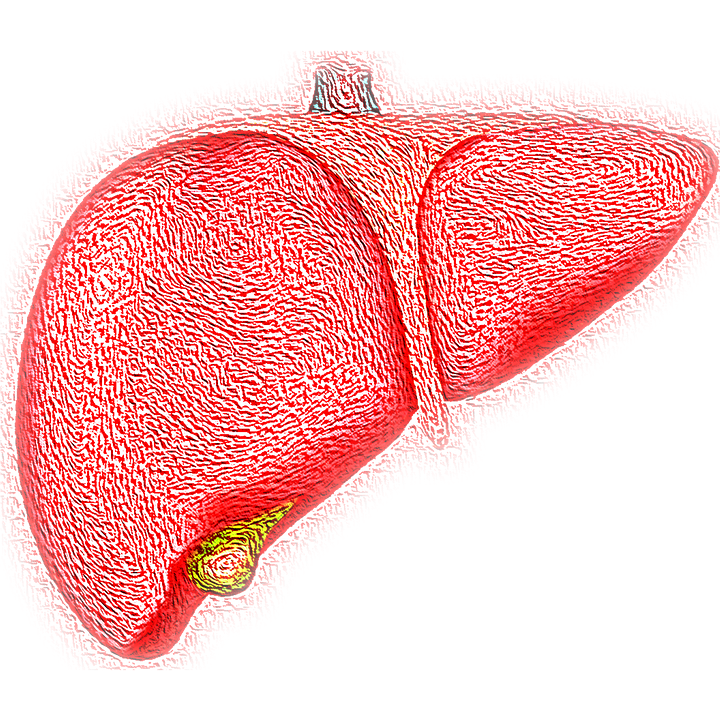Dylan Stoll | Health Editor
Featured Image: Yale researchers develop a drug capable of diminishing excessive levels of fat in the liver. | Courtesy of Pixabay
An experimental drug called Controlled Release Mitochondrial Protonophore (CRMP), produced by a team of researchers at the Yale School of Medicine, has made pharmaceutical headlines recently due to its ability to lower the amount of fat in the livers of those with non-alcoholic fatty liver disease (NAFLD).
NAFLD is an ailment that affects approximately seven million Canadians today, that’s one in every five citizens. It is described as an excessive build-up of fat in the cells that make up the liver without an over-consumption of alcohol being a factor in the accumulation. NAFLD’s symptoms are negligible to non-existent and can result in severe, life-threatening problems if left untreated.
The disease is most widely associated with obesity, a national issue that affects an astounding 50 per cent of Canadian citizens. It is estimated that 75 per cent of people with obesity will develop a simple fatty liver and 23 per cent will suffer from inflammation.
Non-alcoholic steatohepatitis (NASH) is an advanced form of NAFLD. When the accumulation of fatty tissue in the liver results in inflammation and damage, it is known as NASH. This can result in scarring of the liver and a deadly condition known as liver cirrhosis. Those with NAFLD are also susceptible to liver cancer and may require a liver transplant if the disease progresses into the NASH stage.
Aside from exercise and a healthier diet, there is not much else that one can do to cure themselves of NAFLD. CRMP, however, may provide an alternative, pharmaceutical approach for those who are left without options.
Dr. Robert Tsushima, a professor at York who specializes in cell biology, explains how CRMP works.
“CRMP works in the mitochondria—organelles in the cells that produce the main energy molecule, ATP,” Tsushima clarifies.
“The mitochondria produce ATP by using the large proton (hydrogen ion) gradient, in which there is a high concentration difference of protons between the inner and outer membranes of the mitochondria. The high concentration of protons is used by the protein, ATP synthase, to make ATP. ATP synthase is a molecular turbine because the protein basically works like a turbine. It physically rotates, and in doing so, this provides the energy to make ATP. CRMP works by reducing the proton gradient in the mitochondria. It binds to protons and carries them across the membrane to where the concentration is lower (protonophore—proton translocator). By reducing the proton gradient, ATP synthase does not make as much ATP.”
Essentially, the proton gradient Tsushima refers to can be thought of as water on either side of a hydroelectric dam (the membranes). The side with more water empties into the side with less water through the turbine (ATP synthase), which turns to produce electricity (ATP). CRMP is a sort of bypass gate for the dam, allowing water to reach the other side without interacting with the turbine.
But the question remains: how does CRMP reduce the amount of fat?
“The other effect of reducing the proton gradient by CRMP is it uncouples the process of cellular respiration (use of fuels and oxygen) by the mitochondria to make ATP. This uncoupling effect generates more heat by the mitochondria,” says Tsushima.
“With greater uncoupling of cellular respiration in the mitochondria, more heat is generated, and this increases the metabolic rate in the cells and tissues. The major sources of fuel for cellular respiration are glucose and fat. In fact, fat is a better fuel. Therefore, CRMP leads to a greater breakdown of fat because the mitochondria needs to increase cellular respiration due to reduction in ATP production.”
Although the drug has shown promising results in small numbers of cynomolgus and rhesus macaques, it is going to require further, extensive testing before it can be made available to the public.
Until then, if you have NAFLD, a lifestyle change is recommended. This includes, as previously stated, a healthier diet and more exercise with a minimum attainment of 10 per cent reduction in body weight.



After my Hepatitis B diagnosis, I was on Hepsera for few months but my mild pains persist on the right side of my abdomen. Two years ago, I learnt about an Hepatitis B Virus treatment from Herbal Health Point (ww w. herbalhealthpoint. c om), I was on the treatment for over 7 months and tested negative to the virus after I completed the treatment. Its almost unbelievable, I completed the treatment two years ago and still negative!